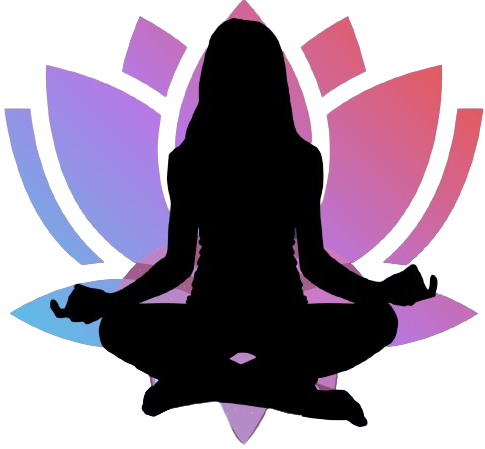
Stress and tension have become almost inevitable. Finding ways to relax and manage these pressures is crucial for maintaining our health and well-being. While there are various methods to achieve relaxation, acupressure is a time-tested technique that stands out for its simplicity and effectiveness. This ancient Chinese practice can be done easily at home, providing relief from stress, pain, and various ailments without the need for special equipment or professional assistance.
What is Acupressure?
Acupressure is a traditional Chinese medicine technique that involves applying pressure to specific points on the body. These points, known as acupoints, are situated along energy pathways called meridians. According to traditional Chinese medicine, stimulating these points can help balance the body’s energy, or Qi (pronounced “chee”), and promote natural healing processes.
While acupressure shares similarities with acupuncture, it doesn’t involve the use of needles. Instead, it uses fingers, thumbs, or even simple tools to apply pressure. This makes it an accessible and non-invasive method for anyone looking to alleviate symptoms such as headaches, muscle pain, anxiety, and more.
Benefits of Acupressure
Acupressure offers a wide range of health benefits, many of which are supported by scientific studies. Some of the primary benefits include:
Pain Relief: Acupressure can alleviate various types of pain, including headaches, neck and back pain, and arthritis.
Stress Reduction: By promoting relaxation and reducing tension, acupressure helps to lower stress levels and improve overall mental health.
Improved Sleep: Regular acupressure can address insomnia and other sleep disorders, helping you achieve a more restful night’s sleep.
Enhanced Circulation: Stimulating acupoints can improve blood circulation, which aids in the delivery of oxygen and nutrients throughout the body.
Digestive Health: Acupressure can help alleviate digestive issues such as nausea, bloating, and constipation.
Immune Support: By balancing the body’s energy and reducing stress, acupressure can bolster the immune system.
How to Perform Acupressure at Home
Before you begin, it’s important to create a calm and comfortable environment. Find a quiet space where you can relax without interruptions. Sit or lie down in a comfortable position, and take a few deep breaths to center yourself. You can use your fingers, thumbs, or knuckles to apply pressure, and remember to be gentle but firm.
Here are some simple acupressure techniques you can try at home
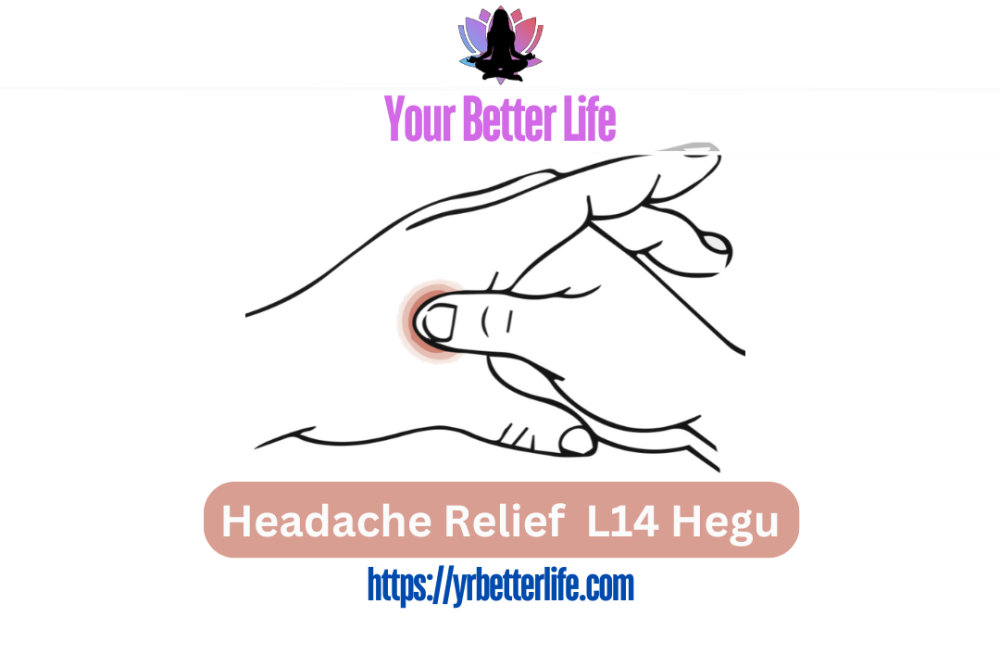
1. Headache Relief
Acupoint: LI4 (Hegu)
- Location: Between the thumb and index finger, in the fleshy part of the hand.
- How to Apply: Use your thumb to apply firm pressure to the point for 1-2 minutes. Repeat on the other hand.
Acupoint: GB20 ((Hegu)
- Location: At the base of the skull, in the hollows on both sides of the neck.
- How to Apply: Use your thumbs to apply gentle pressure to both points simultaneously for 1-2 minutes.
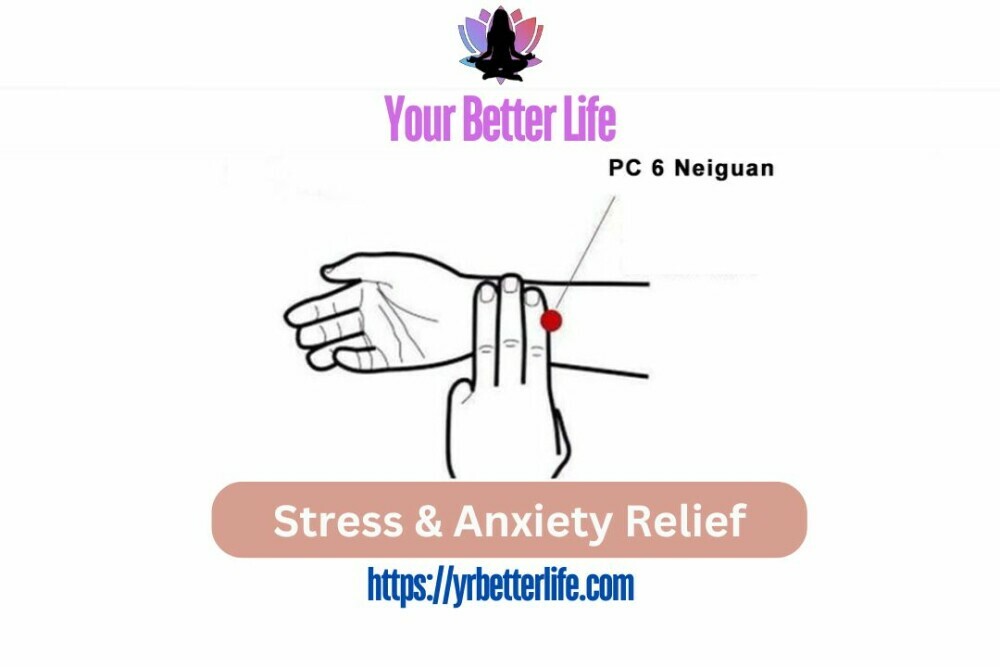
2. Stress and Anxiety Relief
Acupoint: PC6 (Neiguan)
- Location: On the inner forearm, about three finger-widths below the wrist crease, between the two tendons.
- How to Apply: Use your thumb to apply steady pressure for 1-2 minutes on each arm.
Acupoint: HT7 (Shenmen)
- Location: On the wrist crease, in line with the pinky finger.
- How to Apply: Apply gentle pressure with your thumb for 1-2 minutes on each wrist.
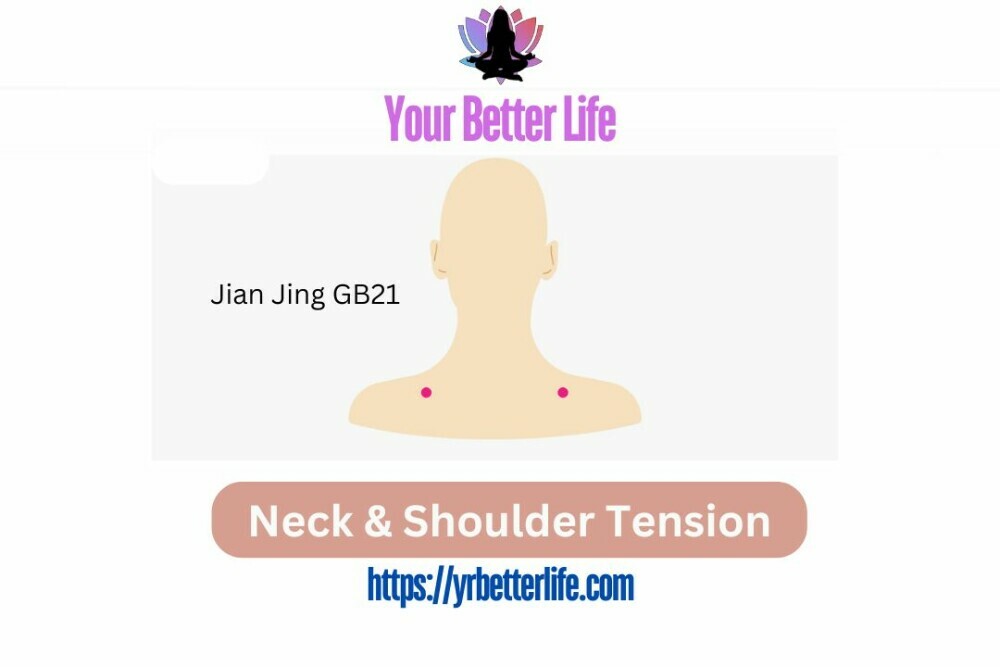
3. Neck and Shoulder Tension
Acupoint: GB21 (Jian Jing)
- Location: On the top of the shoulder, midway between the neck and the outer shoulder.
- How to Apply: Use your fingers to apply firm pressure for 1-2 minutes on each shoulder.
Acupoint: SI11 (Tianzong)
- Location: On the upper back, in the center of the shoulder blade.
- How to Apply: Apply pressure using your knuckles or a tennis ball, holding for 1-2 minutes on each side.
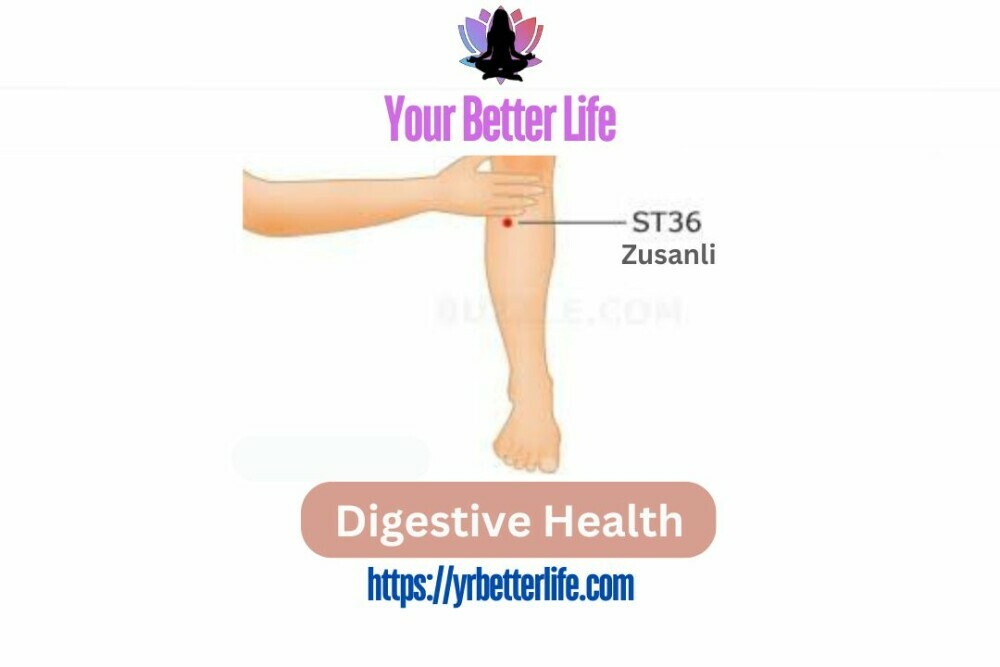
4. Digestive Health
Acupoint: ST36 (Zusanli)
- Location: Four finger-widths below the kneecap, one finger-width outside the shinbone.
- How to Apply: Use your thumb to apply firm pressure for 1-2 minutes on each leg.
Acupoint: CV12 (Zhongwan)
- Location: Midway between the navel and the bottom of the sternum.
- How to Apply: Use your fingers to apply gentle pressure for 1-2 minutes.
Tips for Effective Acupressure
- Consistency: For best results, practice acupressure regularly. Consistent application helps in maintaining energy balance and promoting overall health.
- Hydration: Drink plenty of water before and after your acupressure session to help flush out toxins.
- Relaxation: Ensure you are in a relaxed state before starting your acupressure routine. Deep breathing and a calm environment enhance the effectiveness of the technique.
- Pressure: Apply firm but gentle pressure. Too much force can cause discomfort, while too little may not be effective.
- Duration: Hold each acupoint for 1-2 minutes, applying pressure in a circular motion.
- Listening to Your Body: Pay attention to your body’s response. If you experience any pain or discomfort, reduce the pressure or stop the session.
Incorporating Acupressure into Your Daily Routine
Integrating acupressure into your daily routine can be easy and beneficial. Here are some practical ways to incorporate it into your day:
- Morning Routine: Start your day with a brief acupressure session to energize and prepare your body for the day ahead. Focus on points that boost energy and mental clarity, such as LI4 (Hegu) and ST36 (Zusanli).
- Work Breaks: Use your breaks at work to relieve stress and tension. Spend a few minutes applying pressure to acupoints like PC6 (Neiguan) and GB21 (Jian Jing).
- Evening Relaxation: Wind down in the evening with a relaxing acupressure session. Focus on points that promote relaxation and sleep, such as HT7 (Shenmen) and SP6 (Sanyinjiao).
- During Exercise: Incorporate acupressure into your post-exercise routine to relieve muscle tension and improve recovery. Target points like GB34 (Yanglingquan) for muscle relaxation.
Tools for DIY Acupressure
While your hands are the primary tools for acupressure, there are additional tools that can enhance your practice:
- Acupressure Mats: These mats are covered with plastic or metal points that stimulate multiple acupoints simultaneously when you lie on them.
- Acupressure Balls: Small balls with spikes can be used to apply pressure to specific points, especially on the back and feet.
- Massage Rollers: Handheld rollers with textured surfaces can be used to stimulate larger areas, such as the back and legs.
- Finger Massagers: Small devices designed to apply pressure to fingers and hands, targeting acupoints in these areas.
Precautions and Considerations
While acupressure is generally safe, there are a few precautions to keep in mind:
- Pregnancy: Some acupoints are contraindicated during pregnancy as they may induce labor. Consult with a healthcare provider before performing acupressure if you are pregnant.
- Medical Conditions: If you have any chronic medical conditions or are undergoing treatment, consult with your healthcare provider before starting acupressure.
- Injuries: Avoid applying pressure to areas with recent injuries, inflammation, or open wounds.
- Professional Guidance: If you are new to acupressure or have specific health concerns, consider consulting with a professional acupuncturist or acupressure therapist for guidance.
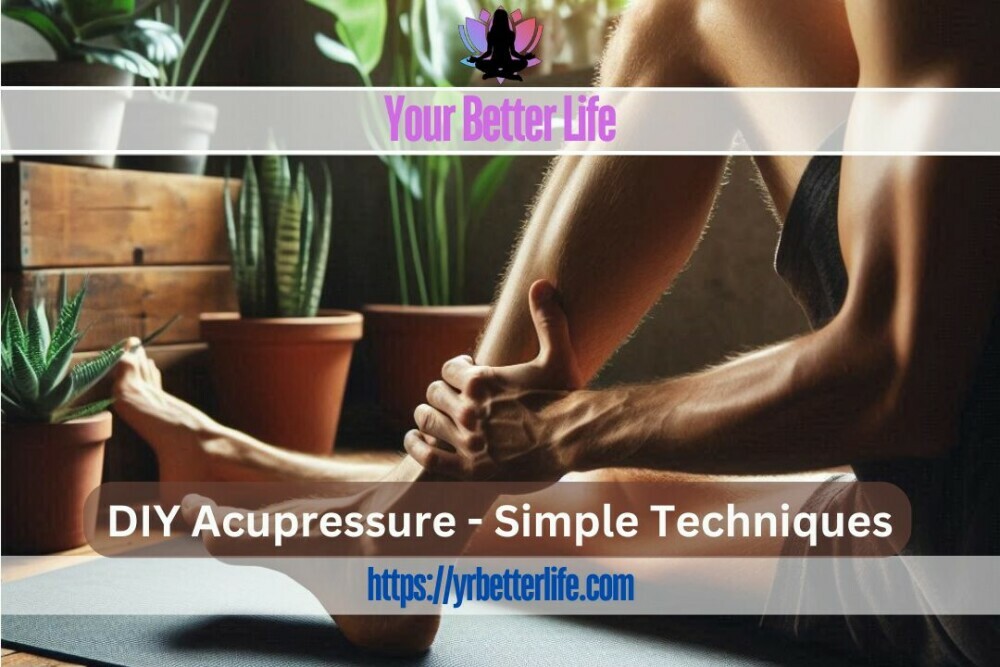
Conclusion
Acupressure is a powerful and accessible tool for promoting health and well-being. By learning a few simple techniques, you can easily incorporate this practice into your daily routine, providing relief from stress, pain, and various ailments. Remember to be consistent, listen to your body, and enjoy the journey towards better health and relaxation.
With a little practice and dedication, DIY acupressure can become an integral part of your self-care routine, helping you to lead a more balanced and harmonious life.
With warmth & compassion
Shaun
